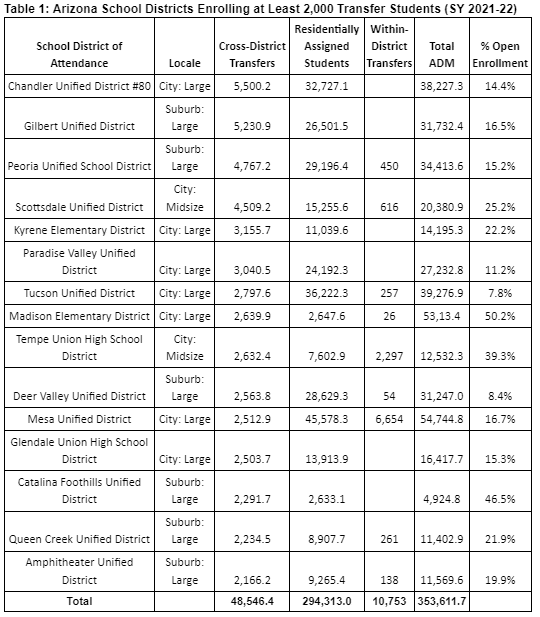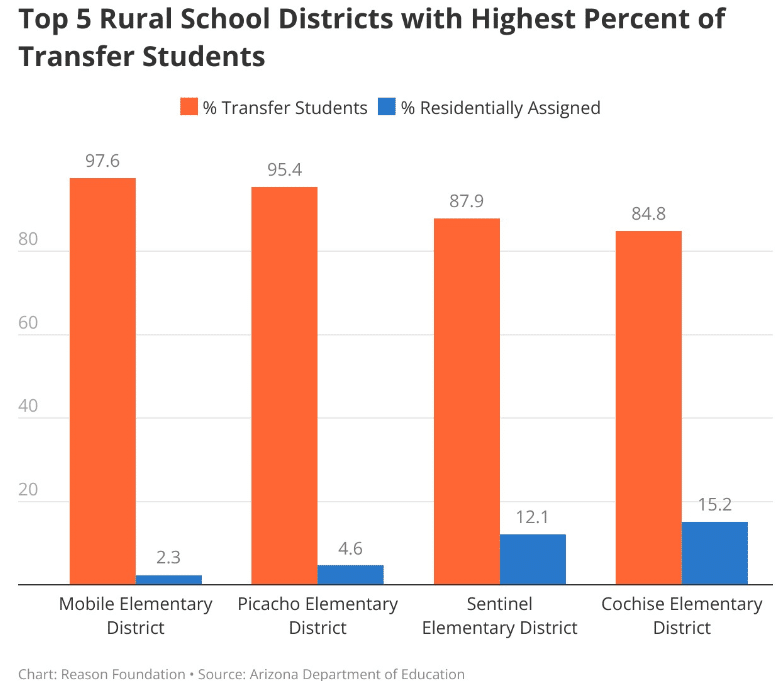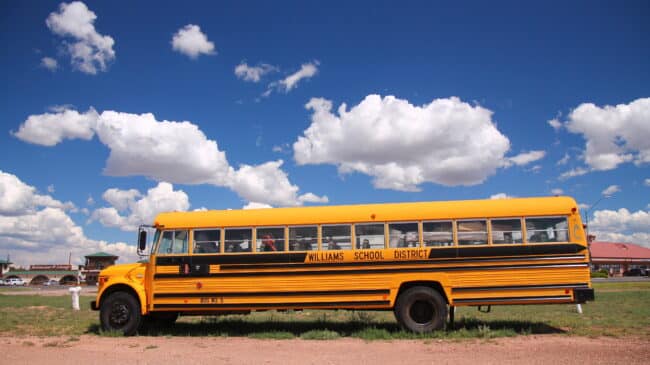In 2023, 14 states adopted a total of 16 private or public school choice policies, greatly expanding education options for students. Despite these victories for students, some policymakers fear that traditional public schools, especially rural schools, would struggle to adapt to a marketplace where enrollment isn’t tethered to where students live.
Yet new data from Arizona, which boasts one of the most robust education marketplaces in the country, shows that traditional public schools from various locales can successfully contend for students in an environment where school district boundaries play a diminishing role.
The Arizona Department of Education’s (ADE) data shows that students have access to a wide array of schooling options, especially public ones. During the 2021-22 school year, 1.1 million students were enrolled in Arizona’s public schools. However, nearly 115,000 students attended a traditional public school other than their assigned one, using Arizona’s robust open enrollment program, which lets students attend any traditional public school so long as seats are available.
More than 99,600 students used cross-district open enrollment to attend a school outside their assigned school district, and more than 15,000 used within-district open enrollment to attend a public school outside their assigned school zone but inside their school district. This means that almost 13% of students enrolled in traditional public schools in Arizona used open enrollment to choose their public schools.
In the 2021-22 school year, about 42% of all student transfers in Arizona occurred in just 15 school districts classified as urban or suburban by the National Center for Education Statistics (NCES), mostly in the greater Phoenix and Tucson areas. Each of these 15 school districts enrolled 2,000 or more cross-district transfer students.

For instance, the third largest school district in the state, Chandler Unified District #80 in a suburb of Phoenix, had the most cross-district transfers, totaling 5,500 students, or more than 14% of the district’s average daily membership (ADM). At the same time, Mesa Unified District in Phoenix, Arizona’s largest school district, had the most within-district transfers, totaling 6,654 students, more than 12% of the district’s average daily membership. Mesa Unified also received more than 2,500 cross-district transfers, forming nearly 17% of its ADM.
In seven of these 15 school districts, transfer students made up 20% or more of their enrollment. In particular, cross-district transfers in two districts, Catalina Foothills Unified District and Madison Elementary District, made up a considerable part of their overall average daily membership. The former received almost 2,300 cross-district transfers, nearly 47% of the district’s ADM, while the latter district received 2,640 cross-district transfers, more than half of its ADM.
These examples illustrate how public school districts can function in a robust education marketplace, successfully attracting students from outside their boundaries while giving students and families options to find the public schools best for them.

Yet, open enrollment isn’t just for Arizona’s largest school districts. It is also popular in the state’s rural locales. The ADE report showed that nearly all Arizona school districts classified as rural by NCES had cross-district transfer students during the 2021-22 school year. While cross-district transfer students made up more than 13% of all students enrolled in rural school districts, cross-district transfers formed 20% or more of student enrollments in nearly half of the state’s rural school districts. In fact, nine out of the 10 school districts with the highest percentage of transfer students were rural.

Moreover, 13 out of 16 school districts whose ADM is 50% or more transfer students are rural per NCES classification. For example, Miami (AZ) Unified District had an average daily membership of 1,548 students. Only 621 of the students were residentially assigned to the school district and, 927 students transferred to Miami from other school districts. This means that 60% of Miami Unified District’s enrollment came from transfer students.
Rural school districts of varying sizes participated in open enrollment. For instance, 43% of cross-district transfer students in rural areas were enrolled in 81 small or very small rural school districts (ADMs 600 or less), according to Arizona’s Auditor General. At the same time, 12 medium rural school districts enrolled 36% of all rural transfer students. Since Arizona’s state funds generally follow students, some school districts rely on transfer students to remain fiscally solvent, just as similar rural school districts in California do.
The number of students using these programs illustrates the important role open enrollment plays in Arizona’s education marketplace. Yet open enrollment isn’t the only publicly funded education option available to the state’s students.
Combined with the 240,000 students enrolled in Arizona’s charter schools and the 9,699 students receiving Empowerment Scholarship Accounts, which can be used for private and online schools, almost 365,000 K-12 students used publicly funded school choice during the 2021-22 school year. This month, the ADE announced that 65,553 students would receive ESAs during the 2023-24 school year, which means that Arizona’s marketplace is still growing.
Arizona is an outstanding example of how school choice policies can flourish when given the opportunity. Although rural transfer students only account for six percent of the approximately 115,000 students using open enrollment, rural students can account for a significant percentage of the total students enrolled in rural school districts. Rather than viewing school choice negatively, rural districts can look at these programs as a way to attract students.
Open enrollment, combined with Arizona’s universal education savings account policy and charter schools, means that school district boundaries matter less in school selection. Instead, Arizona’s student-centered education marketplace lets students from all walks of life access an education that is the right fit. This is great for students, but data show that school districts benefit as well.

